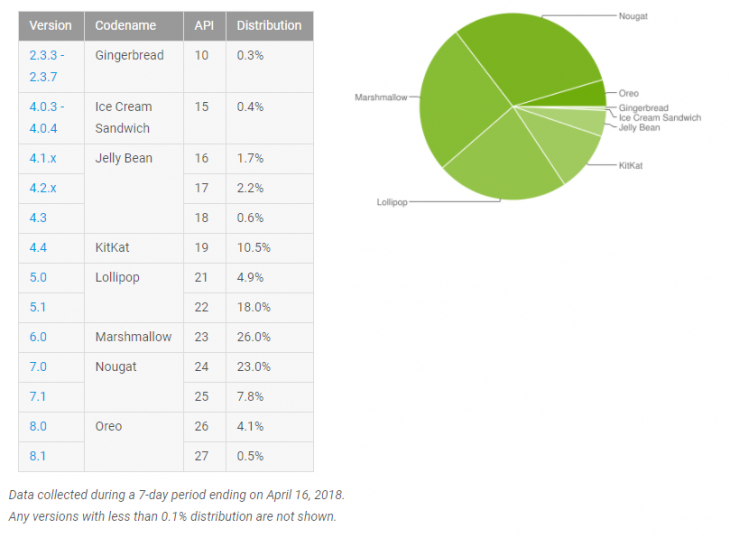
We look forward to the time each month when Google release the Android distribution numbers for the month, just to see how the platform is continuing to mature and grow. Unfortunately for some inexplicable reason March was missed, forgotten, or deleted but today they have brought us up to date with the release of the figures for April 2018.
This month there are some startling changes with some decent decreases in percentages for all of the older versions below 5.0 Lollipop (and so there should be). At the same time Marshmallow dropped fairly significantly and conversely Nougat grew. Even more impressive was the number that Oreo grew by — as expected with the release of the Samsung Galaxy S9 phones.
Given the upcoming release and increased availability of the Huawei, LG, HTC, OnePlus flagships (along with many Chinese phones) we expect to see Oreo grow even more in the coming months.
For the record, here’s how the numbers compared against February (2 months ago):
| Android Version | February 2018 | April 2018 |
| Android 2.3.3 – 2.3.7 (Gingerbread) | 0.3% | 0.3% |
| Android 4.0.3 – 4.0.4 (Ice Cream Sandwich) | 0.4% | 0.4% |
| Android 4.1.x (JellyBean) | 1.7% | 1.7% |
| Android 4.2.x (JellyBean) | 2.6% | 2.2% |
| Android 4.3 (JellyBean) | 0.7% | 0.6% |
| Android 4.4 (KitKat) | 12.0% | 10.5% |
| Android 5.0 (Lollipop) | 5.4% | 4.9% |
| Android 5.1 (Lollipop) | 19.2% | 18.0% |
| Android 6.0 (Marshmallow) | 28.1% | 26.0% |
| Android 7.0 (Nougat) | 22.3% | 23.0% |
| Android 7.1 (Nougat) | 6.2% | 7.8% |
| Android 8.0 (Oreo) | 0.8% | 4.1% |
| Android 8.1 (Oreo) | 0.3% | 0.5% |
It is good to see Oreo growing so much and we expect it to grow exponentially in the coming months as surely any manufacturer releasing a phone 6 months after the release of Oreo would not release it with Nougat. Hopefully all these Oreo phones bring easily update-able Treblised phones so that all users can easily enjoy the latest Android version.




